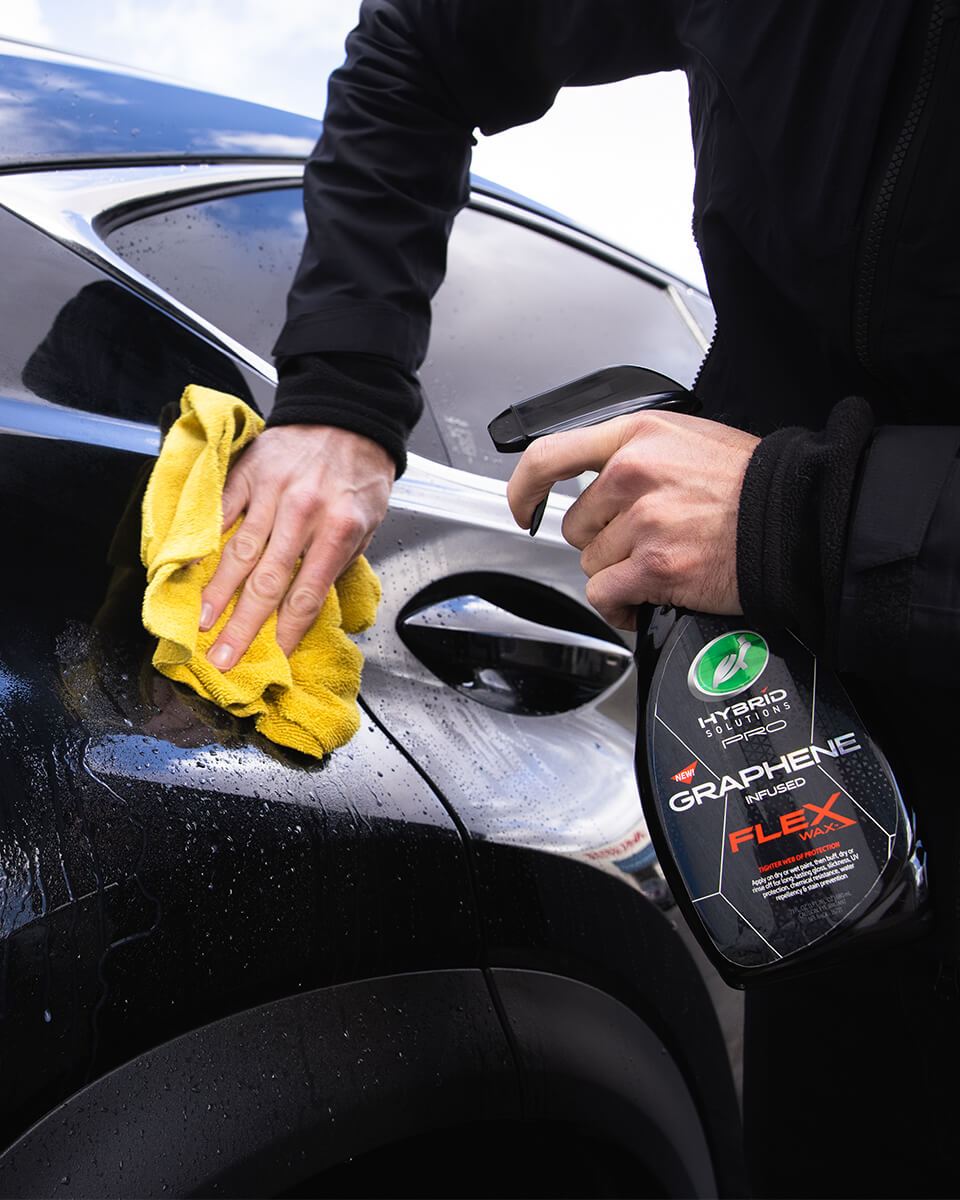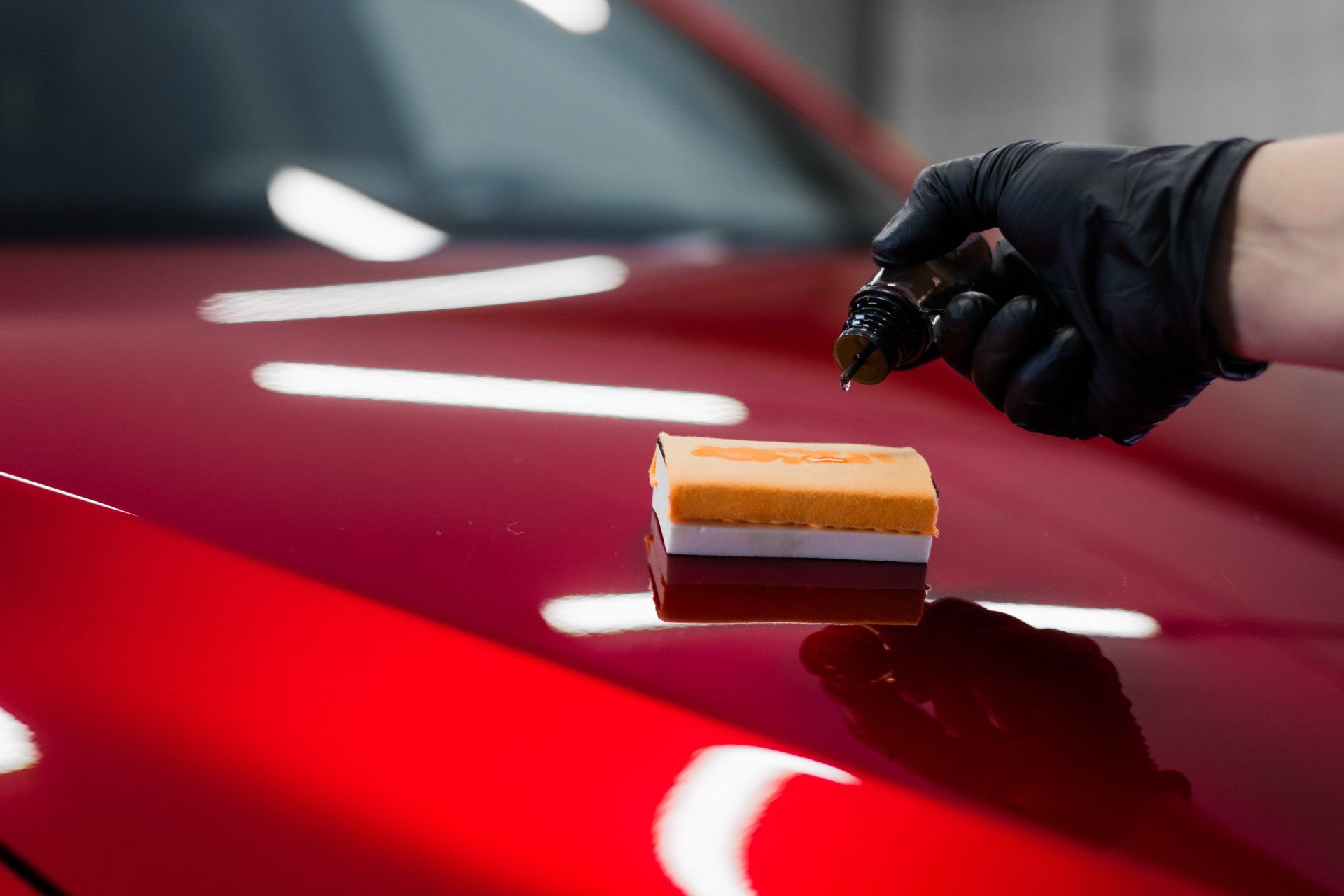What to expect during a Ceramic Coating Newark appointment
Checking out the Science Behind Car Ceramic Coating and Its Safety Features
The science of car ceramic coating presents an interesting research study in innovative automotive protection. Composed primarily of silicon dioxide and polymers, these coatings form a durable bond with vehicle paint. This interaction enhances resilience against ecological hazards while offering hydrophobic benefits. However, the intricacies of exactly how these finishes job and their long-lasting benefits remain less understood. Unboxing these information discloses why ceramic finishes are coming to be a favored choice for car treatment
What Is Ceramic Coating?
Ceramic coating is a fluid polymer that chemically bonds to the surface of a car's paint. This advanced protective layer enhances toughness and provides remarkable resistance to ecological variables. Unlike standard wax or sealers, which supply short-term protection, ceramic coverings develop a resilient guard that can stand up to extreme problems such as UV rays, acidic contaminants, and severe weather condition. When applied correctly, the coating forms a hydrophobic surface, creating water to bead and slide off, which aids in keeping the automobile's tidiness. Additionally, it uses improved gloss and depth to the paint, making the automobile show up even more refined and vibrant. The application process typically entails extensive surface prep work, consisting of cleansing and sprucing up, to ensure peak bonding. Therefore, ceramic coatings are ending up being increasingly preferred amongst car enthusiasts and those seeking to secure their financial investments, assuring to keep the vehicle's aesthetic charm while minimizing the regularity of upkeep.
The Structure of Ceramic Coatings
The detailed formula of ceramic coatings mostly contains silicon dioxide (SiO2), which is acquired from natural resources like quartz and sand. This crucial element gives the foundation for the coating's toughness and protective top qualities. Along with SiO2, ceramic coatings usually consist of various polymers and additives that improve bond, adaptability, and resistance to ecological factors. These substances work synergistically to produce a robust obstacle against impurities such as dirt, chemicals, and UV rays.Furthermore, some formulations include titanium dioxide (TiO2) or various other nanomaterials, which can boost the coating's hydrophobic buildings, resulting in better water repellency. The exact composition can differ substantially amongst suppliers, impacting performance and durability. Eventually, the combination of these elements culminates in a protective layer that not just improves the aesthetic appeal of cars yet also serves to extend their lifespan by shielding the surface from possible damage.
Exactly How Ceramic Coatings Work
Comprehending exactly how ceramic finishes work involves discovering their chemical structure, which contributes to their protective top qualities. The application procedure is crucial for attaining perfect outcomes, while long life and toughness variables identify the coating's performance over time. Together, these aspects highlight the advantages and performance of ceramic coatings for automobile defense.
Chemical Make-up Explained
While numerous car proprietors look for durable defense for their vehicles, the chemical structure of ceramic layers plays an essential function in their performance. These coatings mainly are composed of silicon dioxide (SiO2), which is stemmed from all-natural minerals. This substance develops a solid bond with the automobile's paint, creating a long lasting, protective layer. Additionally, many ceramic layers consist of titanium dioxide (TiO2), improving their hydrophobic properties and resistance to UV rays. The existence of polysiloxanes can even more improve adaptability and sturdiness. With each other, these components add to the coating's ability to ward off water, dirt, and contaminants, while also giving a high-gloss surface. Comprehending this chemical foundation assists car proprietors value the durable security used by ceramic coverings.
Application Refine Introduction
Using ceramic layers entails a meticulous process that assures optimal bonding and protection for the vehicle's surface area. Complete cleansing and purification of the car's exterior are performed to remove dirt, grime, and previous waxes. This step verifies that the surface area is without contaminations that can hinder adhesion. Following this, the paint is usually brightened to boost clearness and get rid of any type of imperfections. As soon as prepared, the ceramic coating is applied in tiny areas making use of an applicator pad, permitting consistent protection. The coating is after that entrusted to treat, developing a solid chemical bond with the surface. Correct curing times and problems are vital, as they confirm the coating achieves its optimum effectiveness and safety qualities.
Durability and Durability Aspects
Ceramic finishings are made to provide long-lasting protection through their innovative chemical make-up, which produces a robust barrier against ecological pollutants. The toughness of these finishings is influenced by aspects such as the density of the application, the high quality of the product, and the problems under which the car is exposed. Top quality ceramic coverings can last numerous years, withstanding scrapes, UV rays, and chemical spots. Proper maintenance, consisting of routine cleaning and regular reapplication, can additionally enhance longevity. In addition, environmental aspects like environment and direct exposure to toxins can impact the life-span of the coating. In general, when used and maintained appropriately, ceramic finishes Discover More use outstanding sturdiness, making them a popular selection for car enthusiasts looking for to preserve their car's appearance.
Hydrophobic Residences and Water Repellency
Hydrophobic residential properties are a hallmark of high quality car ceramic layers, significantly boosting the vehicle's surface efficiency. These layers produce a molecular bond with the car's paint, resulting in a surface area that wards off water properly. When water enters into call with a ceramic-coated surface, it beads up and rolls off, reducing the amount of fluid that continues to be on the paint. This habits not only adds to a cosmetically pleasing look yet likewise decreases the accumulation of impurities such as dirt, grime, and roadway salts.The improved water repellency results in easier cleansing and maintenance, as less effort is required to eliminate unwanted compounds. In addition, the hydrophobic nature of ceramic finishings assists in preventing water spots, which can mar the coating of uncoated surfaces. On the whole, the consolidation of hydrophobic properties in ceramic coatings plays an important function in preserving the car's beautiful appearance while simplifying upkeep.
Security Against Scratches and UV Damage
Car ceramic finishings provide significant defense against scrapes and UV damage. The scratch resistance device produces a long lasting layer that takes in effects, while the UV protecting benefits aid preserve the vehicle's paint integrity over time. With each other, these functions add to a longer-lasting and aesthetically enticing finish.
Scrape Resistance System
Making use of advanced technology, ceramic coatings offer a robust shield versus scratches and UV damages, enhancing the longevity and appearance of automobile surfaces. The scrape resistance mechanism of these layers is credited to their unique molecular structure, which forms a long lasting bond with the lorry's paint. This bond creates a hard, protective layer that can take in impacts and resist abrasions. Additionally, the smooth surface of the coating decreases friction, making it tough for impurities to stick and create scratches. The chemical make-up of ceramic layers often includes nanoparticles that strengthen the protective layer, additional enhancing its durability. Subsequently, lorries treated with ceramic coatings show substantially improved scrape resistance contrasted to traditional wax or sealers, making certain a pristine coating gradually.
UV Shielding Benefits
The safety top qualities of ceramic coverings extend past scrape resistance to consist of considerable UV shielding advantages. These finishings produce a robust barrier that reflects harmful ultraviolet rays, safeguarding the lorry's paint and underlying products. Extended exposure to UV radiation can result in fading, oxidation, and deterioration of the paint surface. By integrating ceramic coverings, vehicle proprietors can efficiently alleviate these threats, maintaining the visual appeal and stability of their cars. Furthermore, the UV obstructing properties add to improved long life, reducing the regularity of repainting and upkeep. Ultimately, the assimilation of ceramic finishes uses a detailed option for protecting automobiles from the damaging results of sun direct exposure, guaranteeing a continual, vivid look over time.
The Durability and Maintenance of Ceramic Coatings

Regularly Asked Questions
Can Ceramic Coating Be Applied to Any Type Of Sort Of Automobile?
Ceramic coating can be related to numerous kinds of lorries, including cars and trucks, vehicles, and motorbikes. Surface area preparation and compatibility with certain products are necessary for suitable bond and efficiency of the coating.
Exactly How Much Does Ceramic Coating Usually Price?
Ceramic coating generally sets you back between $500 and $2,000, depending upon elements such as car size, coating high quality, and expert application. The investment can provide durable defense and improve the car's appearance over time.

Is Specialist Application Needed for Best Outcomes?
The requirement of professional application typically relies on desired outcomes. Professionals generally assure appropriate surface preparation and application strategies, causing suitable bonding and longevity of the coating, which might be challenging for inexperienced individuals to achieve.
Can Ceramic Coatings Be Gotten Rid Of or Repaired?
Ceramic coatings can be eliminated or repaired, though the process may call for certain solvents or techniques - Ceramic Coating Newark. Appropriate removal is necessary to stay clear of damage to the underlying surface area, highlighting the significance of specialist help for perfect outcomes
Exactly How Does Porcelain Coating Compare to Conventional Wax?
The contrast in between ceramic coating and conventional wax discloses that ceramic layers provide remarkable resilience, enhanced security versus environmental pollutants, and longer-lasting shine, while wax needs more regular application and provides less general resistance to damage.